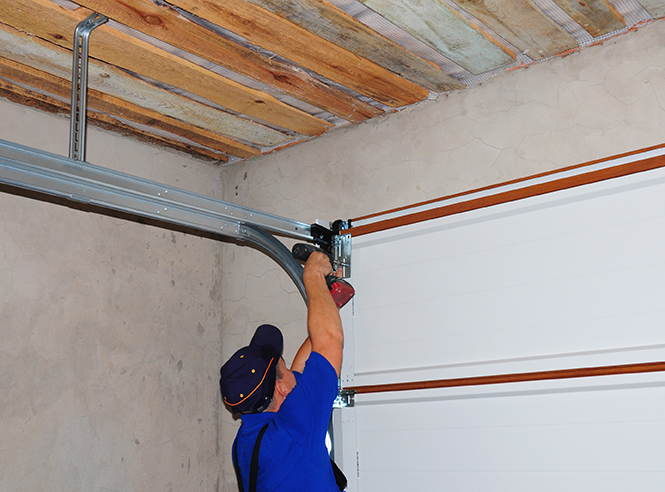Common Garage Door Troubles and How to Take care of Them
Garage doors are crucial for both safety and convenience, yet they usually offer a range of typical concerns that can annoy property owners. While some concerns might show up uncomplicated to deal with, others might require an extra nuanced understanding of garage door mechanics.
Noisy Garage Door Operation
A loud garage door operation can be a substantial source of nuisance for home owners, typically suggesting underlying mechanical problems. Such disturbances may originate from various reasons, including damaged rollers, loosened equipment, or not enough lubrication. Identifying the source of the sound is essential for effective resolution.
One usual root cause of excessive noise is the visibility of rusty or damaged rollers. Gradually, these components can wear away, resulting in grinding or squealing audios as the door steps. Regular inspection and substitute of these rollers can considerably minimize noise levels. Additionally, loosened bolts or screws in the door mechanism can create rattling noises during operation. Tightening up these fasteners makes sure a more stable and quieter movement.
Another adding element is inadequate lubrication of the door's relocating components. Using a top notch lubricating substance to the tracks, springtimes, and rollers can substantially reduce friction and sound. House owners need to do this maintenance regularly to maintain optimum performance.
Lastly, the garage door opener might also create sound as a result of its age or mechanical problems. If the noise persists in spite of attending to various other elements, consulting an expert for a detailed inspection and prospective repair service might be required.
Door Will Not Open Up or Shut
Experiencing a garage door that won't open up or shut can be exceptionally aggravating and often signals a malfunction within the system. Numerous variables can add to this concern, and determining the origin is crucial for efficient resolution.

Following, examine the safety and security sensing units situated at the base of the door. These sensors can end up being misaligned or obstructed by particles, preventing the door from running appropriately. Tidy the sensing units with a soft towel and guarantee they are aligned.
In addition, the garage door's interior elements ought to be examined. Problems such as a busted springtime, worn-out rollers, or a harmed opener can impede activity. If any type of parts seem damaged, it may be recommended to speak with a professional for repair work.
Misaligned Tracks
(Superior Support)Misaligned tracks can significantly disrupt the smooth operation of a garage door, leading to functional failures such as irregular activity or full immobilization. This concern commonly develops as a result of a selection of aspects, including wear and tear, accidental influences, or improper installation. When the tracks are misaligned, the rollers can not move easily, which not only stresses the motor however likewise presents security threats.
If you observe any discrepancies, it is vital to deal with the concern without delay. Carefully touch the track back into its appropriate placement utilizing a rubber club or a similar tool, ensuring it is straight and degree.
Regular maintenance, including cleansing the tracks and making sure rollers are in great problem, can protect against future imbalances. By addressing misaligned tracks without delay, you can restore the capability of your garage door and improve its longevity.
Broken Springs
Among the various elements of a garage door system, damaged springs are one of the most usual issues that can dramatically hamper its performance. Garage door springs are vital for stabilizing the weight of the door, permitting smooth opening and closing. When a springtime breaks, it can bring about a door that is difficult to operate or, sometimes, entirely unusable.
There are 2 major types of springs: torsion springs, which are mounted above the door, and extension springs, located on either side. Indications of a read what he said damaged spring consist of a door that won't open up, a noticeable gap in the springtime, or a loud sound during operation. Trying to operate a garage door with a damaged spring can cause additional damage to the door or the opener.
Fixing broken springtimes is not a do it yourself job; it needs specialized devices and proficiency due to the high tension involved. It is advisable to seek advice from an expert technician who can securely replace the springs and make certain the door is effectively stabilized. Routine upkeep and evaluations can assist protect against spring failings and expand the life-span of the garage door system.
Push-button Control Issues

If the remote still stops working to operate, inspect the garage door opener to guarantee that its sensors are clean and unobstructed. Dust, particles, or imbalance might hinder the signal transmission between the remote and the opener.
Disturbance from various other digital devices can additionally restrain remote functionality. Make sure that neighboring tools, such as wireless routers or cordless phones, are not creating interruptions. garage door service. If disturbance is believed, try moving these devices better far from the garage door opener
In some cases, the remote may need to be reprogrammed. Seek advice from the maker's guidelines to reset the push-button control and synchronize it with the garage door opener. If all else fails and the remote continues to malfunction, think about seeking advice from a specialist specialist for a comprehensive inspection and potential substitute of the remote or opener.
Conclusion
(Local Specialists)In summary, common garage door troubles can substantially influence performance and safety and security. Attending to noisy operation includes lubrication and tightening equipment, while issues with opening or closing call for assessment of source of power and sensors. Misaligned tracks can be corrected through change, although busted springtimes require expert intervention. Push-button control breakdowns typically develop from weak batteries or interference, which can be settled via substitute or reprogramming. Positive maintenance and prompt repair services can ensure optimum efficiency and longevity of garage doors.